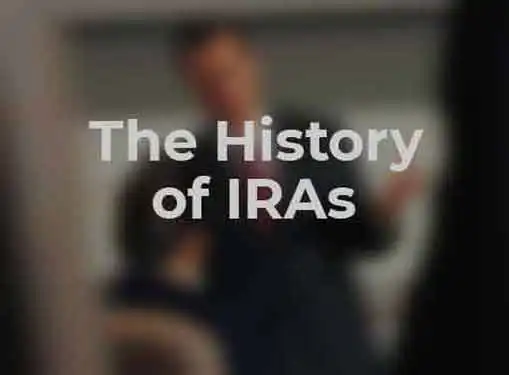Business Finance
Understanding IRAs - Individual Retirement Account History
Written by Bennet Grill for Gaebler Ventures
An Individual Retirement Account, or IRA, is a type of account which allows investors to contribute to their retirement through a beneficial tax structure. IRAs may be started by employees or employers and have a variety of different structures and applications. This article reviews the history of Individual Retirement Accounts.
All Individual Retirement Accounts (IRAs) are meant to provide investors with a beneficial tax structure which they can use to prepare for their retirement.

This article reviews the evolution of the IRA and the different forms of IRAs that exist today.
Here's a short timeline reviewing major legislation regarding Individual Retirement Accounts.
1974 - The Employee Retirement Income Security Act (ERISA) creates the first individual retirement account which allows tax deductible contributions of $1,500 a year
1978 - The Revenue Act of 1978 established the Simplified Employee Pension Plan (the SEP IRA) for small business owners
1981 - The Economic Recovery Tax Act allows all employees, in addition to those not covered by an employee retirement plan, to contribute to an IRA
1986 - The Tax Reform Act eliminates tax deductible contribution for higher income individuals
1996 - The Small Business Job Protection Act allowed non-working spouses to contribute more to a jointly filed IRA and also created the Savings Incentive Match Plan for Employees of Small Employers (SIMPLE) IRA
1997 - The Taxpayer Relief Act created what is known as a Roth IRA and Education IRA, which allows non-deductible contributions into an account which can be redeemed at a later date with no tax penalty and also allows tax-free early withdrawals under certain conditions
2001 - The Economic Growth and Tax Relief Reconciliation Act (EGTRRA) increased the maximum contribution level and included a special "catch-up" clause for contributions from people ages 50 and over.
2002 - Education IRAs become Coverdell Education Savings accounts and are allowed to pay for primary and secondary educational expenses.
2006 - The Pension Protection Act allowed tax free gifts from an IRA for individuals over 70 1/2 and over and instituted the Saver's Credit, an income tax credit for lower income individuals
Hopefully you now have a better understanding of the history of IRA legislation. Please see our individual articles on Traditional IRAs, Roth IRAs, and Educational IRAs for more information.
To learn more about preparing your tax return for an IRA, visit the IRS' website on Individual Retirement Accounts: http://www.irs.gov/publications/p590/index.html.
Bennet Grill is a writer who has a passion for business and finance. He is currently an Economics major at Duke University in North Carolina.
Share this article
Additional Resources for Entrepreneurs




Conversation Board
What's your take on IRAs?